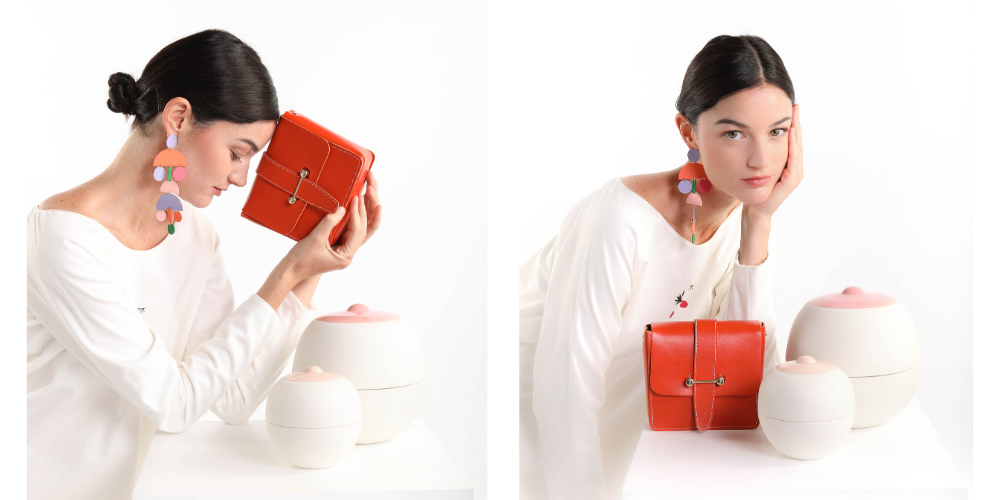At the Who’s Next edition last September, we met with Henri Delebarre, a fashion journalist for multiple magazines, including Marie Claire and Magazine Antidote for whom he is editor-in-chief. He has been writing about fashion and jewellery for two years now.

What inspires you/what are you passionate about?
Fashion in general, meaning clothing and accessories, such as jewellery or leather goods in particular. I am also fascinated by the power that simple objects have to portray messages and emotions and everything behind a piece: its history, the design process and the inspiration which brought the design to life, that’s what interests me.
What is your favourite shop/concept store?
I really like the concept store Nous on rue Cambon which was founded by ex-employees from Colette and the new Saint Laurent Rive Droite shop which was also established in the former premises of Colette on rue Saint Honoré, which offers a wide range of products, from the most sophisticated to the most prosaic, as simple as a lighter. Moreover, there are not only Saint Laurent products, the selection is very interesting, varied and ever-changing.
What challenges are you facing at your job nowadays?
Developing print to ensure paper magazines remain attractive and relevant. Today, when we sell a magazine, we have to be offering a quality product to the customer who is buying it and prepared to spend money to gain access to the content in the magazine or newspaper in question. As with the internet we have become accustomed to having access to everything, for free. So, when someone spends money to read a magazine or a specific article, we have to give them something more, which is essential for keeping your audience on their toes, to stay relevant. As a result, in the future, I think that the magazines which will stand out will be the ones with this approach. Evidently, sales will continue to decrease and print will become less and less important. What counts, is the quality of the content, this is how print can stand out from the web where you often read nothing of importance. On the other hand, the internet is also essential for print magazines, to establish a new, larger audience. And, I think that magazines will also survive if they diversify their activity, developing into real brands, almost a lifestyle. Exploring different domains, creating different forms of content other than text and images, I’m thinking of podcasts for example, or conferences or short films etc.
As a journalist, we have to face the increasing criticism. Today with Instagram, everyone can act as fashion critics, calling themselves fashion journalists. It is challenging, it forces us to question ourselves, and to ask ourselves what our role is. Do we have more right to judge a fashion show than a blogger? In any case, the important thing you need to interpret a fashion show, a collection or a product, is your perspective, and it has to be fed by culture and general knowledge. Fashion doesn’t work in a vacuum, but communicates with many other sectors that also need to be addressed. A fashion show or a product is always part of a wider context, part of history.

Who’s Next in 3 words?
It is a trade-show with a large and intriguing selection. There is everything, from ready-to-wear to accessories, beauty and even décor.
So, I would say:
- Innovative
- In tune with the times (I’m thinking of the Impact initiative that was launched this year in particular), for a more virtuous fashion industry, which is important to support and has to be put first. Who’s Next offers it a platform, and I think that’s great.
- Versatile, with a rich selection, developed.
What advice would you give to people who want to launch into the world of design with their brand and want to take part in Who’s Next to gain visibility?
Today, I think before launching a brand you really have to think about what you want to support. The market is already very saturated. Why create a new brand, what’s one more? I think that this is the question that you really have to ask yourself before launching a brand. You have to have a message, not only that but something original and innovative that fills a void or gap, all whilst being in line with the challenges of our society. It also has to be of a high quality. Alone, storytelling is just hot air.
What do you see for the future of fashion?
I think that the future of fashion will have to undergo an ecological awakening. Fashion needs to truly question itself, and not rely on greenwashing. I think it is absolutely essential for fashion to evolve, but not only on the surface and to be totally in tune with the times and challenges of our time. It needs to find answers. And beyond these questions of ecology and sustainable development there is also the question of inclusivity which is really starting to take a hold and is now indispensable. Today, fashion has to pay attention to what it represents and how it does so. Obviously the industry makes mistakes, which gives rise to scandals but most importantly it must learn from these mistakes so it can avoid making them again.
Favourite pieces that you spotted at Who’s Next?
The ceramics from Manufacture parisienne.
The facemasks from the beauty brand Malou et Marius.
